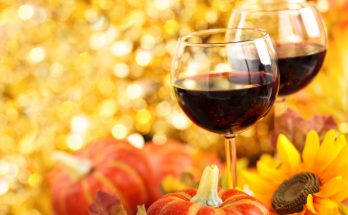How do you pair French wines, which can seem luxurious and complex, with everyday dishes?
Don’t Panic
Let’s break down the barriers first. According to my good friend, Dewey Markham, Jr., a trained chef and wine connoisseur transplanted from New York to Bordeaux, when it comes to pairing wines with food, “the most important thing is to avoid the horrible.” With all the guidance online, in books, and in stores, it’s hard to go wrong with that advice. But it could help to have a few more basics, in a mini, gastronomic Tour de France.
Pairing Wine with the Main Dish
If you can only choose one wine with a meal, choose something that will go with the main dish. Some very basic rules of thumb from my book, The Bordeaux Kitchen, include pairing tannic, flavorful, and full-bodied red wines with lamb and beef; medium-bodied reds with veal and duck; dry white wines, rosés, and lighter reds with pork; and crisp, dry wines with fish. Again, these are very basic rules, and there is much leeway between these guidelines.
What Grows Together Goes Together
Pairing local dishes with local wines is part of France’s charm and secret to the longevity of its regional traditions. Deep pride in local products from cheese to wine to local seasonal dishes, combined with quality controls, have helped preserve France’s gastronomic heritage over the centuries. If you are in Burgundy and order boeuf bourguignon, you will be served a lovely Burgundy pinot noir. If you order a roasted lamb dish in Bordeaux, you will likely get a tannic Bordeaux blend from the Médoc region, north of Bordeaux, known especially for its flavorful cabernet sauvignon grapes.
Red, Red Wine
Red wines vary in complexity and style, just as red meat dishes do. Consider the aspects of texture and intensity in a dish when choosing a wine. Is the meat grilled or slow-cooked? Is there a sauce or extra spice to the dish? A cabernet sauvignon blend from Bordeaux might have notes of tobacco and leather that would go well with a grilled steak, while a suave and smooth pinot noir from Burgundy would go well with a melt-in-your-mouth, slow-cooked beef stew. For spicy red meat dishes, I would turn to a red with some spice to it as well, to hold up to the flavors of the dish, such as a hearty Bandol from Provence, or a Rhone Valley red made with Syrah and Grenache grapes.
Balancing Aromas and Flavors
Think about complementing the aromas and flavors of a dish with those of a wine. A roasted pork dish with prunes, a delicious combination, calls for a fruity wine but perhaps with some acidity to balance out the sweetness of the fruit, such as a dry white from the Rhone Valley or a more tannic red Madiran from France’s Southwest. Most roasted pork dishes pair equally well with a pinot noir from Alsace or Burgundy, with a white Chardonnay from Burgundy, or with a Bordeaux Supérieur rosé.
Fish Dishes
Consider a dry white sauvignon blanc blend, such as from the Entre-Deux-Mers (between two rivers, essentially) region of Bordeaux, with a white fish dish. Located close to the Atlantic coast, these wines go well with seafood, including a Bordelais favorite, raw oysters. And if you are looking for nutrient density, oysters have it all from A to Zinc!
Chicken Dishes
A whole roasted chicken makes an economical, easy family meal. Just pop it into the oven preheated to 365˚F and add herbes de Provence, salt, pepper, and olive oil. Roasted chicken dishes in general pair with either whites or lighter-bodied reds: Try a white Chenin Blanc from the Loire Valley or else a medium-bodied red Languedoc. Because chicken by itself, such as a boneless, skinless breast, has little flavor, pair your wine with the herbs or sauce you are using. A white cream sauce might call for a crisp Burgundy chardonnay or a Bordeaux sauvignon blanc, while a red sauce might call for a rosé from Provence or a light-bodied red from the Loire Valley.
Location, Location, Location
I look at French food and wine pairing as a chance to explore the different regions, foods and wines of France. When it comes to wines, don’t be afraid to expand your palate – there are so many wines, and so little time! Experiment and enjoy your own Tour de France of French gastronomic traditions!



